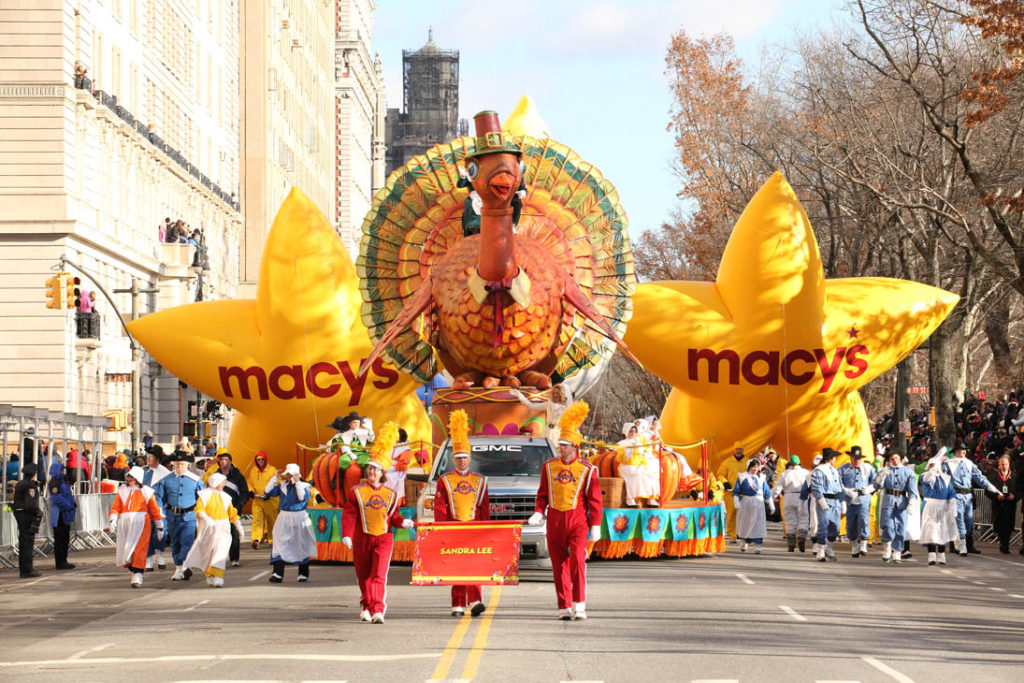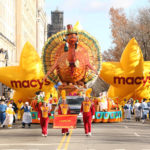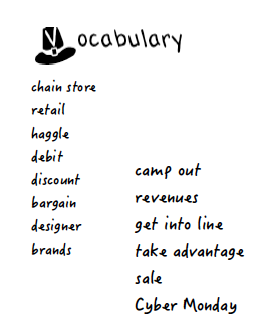
Free Friday: Turkey Day & Black Friday!
With Thanksgiving right around the corner, and the craziness of Black Friday soon thereafter, I wanted to share some opportunities to learn just want these days are, where/how they started, and what they mean today. Whether you’re in the States celebrating or reading from afar, I hope this information will bring some understanding to American culture and give some of your English skills a boost!
You’ll have some listening comprehension exercises through eslvideo.com, reading opportunities via the New York times, vocabulary practice with both, and multiple opportunities to practice writing and sharing your opinions here or on last year’s Thankful quote reflection post.
Thanksgiving
Celebrated on the fourth Thursday of every November, Thanksgiving is recognized as a federal holiday, so most schools, banks, post offices, and any other government offices are closed. The video activity and comprehension exercise will give more details about the history of this day, and how it got its start, so I’ll give more attention to the present day. Remember the four “Fs”…Family, friends, food, and football. When family and friends aren’t feasting on the variety of traditional foods (turkey, stuffing, mashed potatoes and gravy, yams, cranberry sauce, green bean casserole, etc) they’re most likely watching some of the NFL (National Football League) games on TV. In addition to the 4 “Fs”, families can watch the oh-so-famous, Macy’s Thanksgiving Day Parade or catch up on some ZZZs (sleep) thanks to the turkey’s tryptophan, and the several hour process of preparing the feast.
- Macy’s Thanksgiving Day Parade
- typical float in the parade
Via eslvideo.com and thanks to the History Channel, you can learn more about Thanksgiving’s history and practice listening comprehension here: History of Thanksgiving (http://www.eslvideo.com/esl_video_quiz_high_intermediate.php?id=9477)
Want to print this information, use a hard copy in the classroom and have access to the answers? Download/view the PDF file here:
ThanksgivingListenComp
Black Friday
Ever wondered why Black Friday is called black? Black is dark…and generally when used before a word, can signify something negative. Yet, if you’ve heard of the term is represents shopping, deals, and something relatively positive. Maybe it’s because people line up in the wee hours (very early) of the morning, and it’s still dark? <~~ Probably not! So, what have been your initial thoughts?
According to many sources, but specifically the New York Times, it represents: “The day retailer’s books went from red ink to black.” When a retailer was in ‘the red’, they were negative, in debt…and losing money. Black indicates profits, and with a day dedicated to lining up outside a store before it even opens to shop, retailers can guarantee a surge in profits. As technology has continued to grow and improve, these post-Thanksgiving day deals have also extended to something called, Cyber Monday (the Monday following Thanksgiving where the deals can be found online).
I recommend reading the New York times article above for some more information on Black Friday, as well as practicing some more listening with Randall’s ESL-lab here: Shopping Black Friday (http://www.esl-lab.com/shop1/shopping-bf-video.htm)
Expand your vocabulary with the following words, use them in sentences, and try to incorporate them into your conversations this upcoming holiday week! Answer some questions in the comment section. Good luck!
Will you buy anything this Cyber Monday?
What brands or designer labels do you hope to see on sale?
Would you camp out in front of a store to go shopping?
Can you haggle the already low prices of Black Friday?
Happy Studying! ♥
Teachers: Looking for some other Thanksgiving ideas, lessons, and teaching activities? Check out Busyteacher.org for some fun variety!




[…] about 137.4 million people planned on shopping during Thanksgiving weekend, also known as Black Friday. So it’s safe to say that we are in the middle of shopping […]